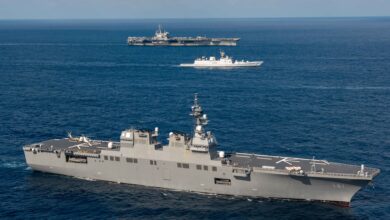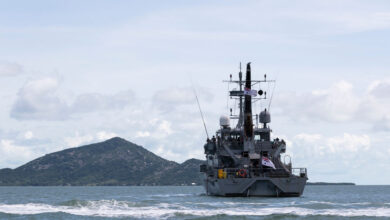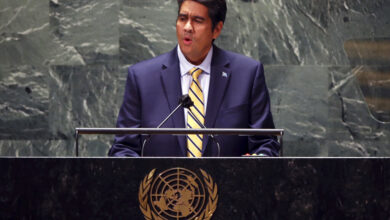Malabar 2016 strengthens multinational capacity among Indian, Japanese and U.S. Navies

FORUM Staff
Indian, Japanese and U.S. troops participated in the annual Malabar exercise in June 2016.
With a top goal of increasing interoperability among the three militaries, especially for maritime security operations, Malabar 2016 continued a series of exercises designed to strengthen multinational maritime relationships and shared security interests, according to prepared statements released by all three defense departments.
“The exercise will support maritime security in the Indo-Pacific region and benefit the global maritime community,” the Indian Defence Ministry said in a prepared statement released before the exercise, according to The Diplomat, an online magazine.
India’s participation was consistent with its Act East Policy and “growing ties among the three countries,” the Indian Navy said, according to the Times of India newspaper. Malabar started as a bilateral exercise in 1992 between the U.S. and India and grew into a multilateral one with Japan.
“The seas are continuous. India can be a neighbor of Japan, Japan can be a neighbor of India,” Indian Navy Flag Officer Commanding-in-Chief, Eastern Naval Command Vice Adm. Harish Bisht told reporters at a news conference, according to the U.S. Pacific Command (USPACOM) website. “There is always enough scope for expansion as far as maritime security is concerned.”
Malabar 2016 featured land and sea training. On land in Sasebo, Japan, participants shared experiences with carrier strike group operations, maritime patrol and reconnaissance operations, surface and anti-submarine warfare, medical operations, damage control, explosive ordnance disposal, helicopter operations, and visit, board, search and seizure operations, the U.S. PACOM website reported.
Participants also conducted training missions in the Philippines Sea to improve military-to-military coordination and capacity for multinational tactical operations. For example, participants engaged in air defense exercises, medical evacuation drills and surface warfare exercises. Special forces from the three navies also conducted exercises together, the website said.
In the picture above, Rear Adm. Brian Hurley, deputy commander of the U.S. 7th Fleet, tours the Indian Navy Kora-class corvette INS Kirch (P62) during Malabar 2016.
Naval ships and aircraft that participated in the exercise included the Japan Maritime Self-Defense Force’s JS Hyuga, a helicopter carrier with SH GO K Integral helicopters and long-range maritime patrol aircraft; the Indian Navy’s INS Sahyadri, INS Satpura, INS Shakti and INS Kirch; the U.S. Navy’s aircraft carrier USS John C. Stennis, USS Mobile Bay, USS Stockdale, USS William P. Lawrence, USS Chung-Hoon and a P-8A Poseidon aircraft, and Los Angeles-class fast attack submarine.
Indian, Japanese and U.S. maritime forces possess a common understanding and knowledge of a shared working environment at sea. Malabar 2016 worked to enhance understanding and relationships among the navies’ Sailors, U.S. PACOM said.




